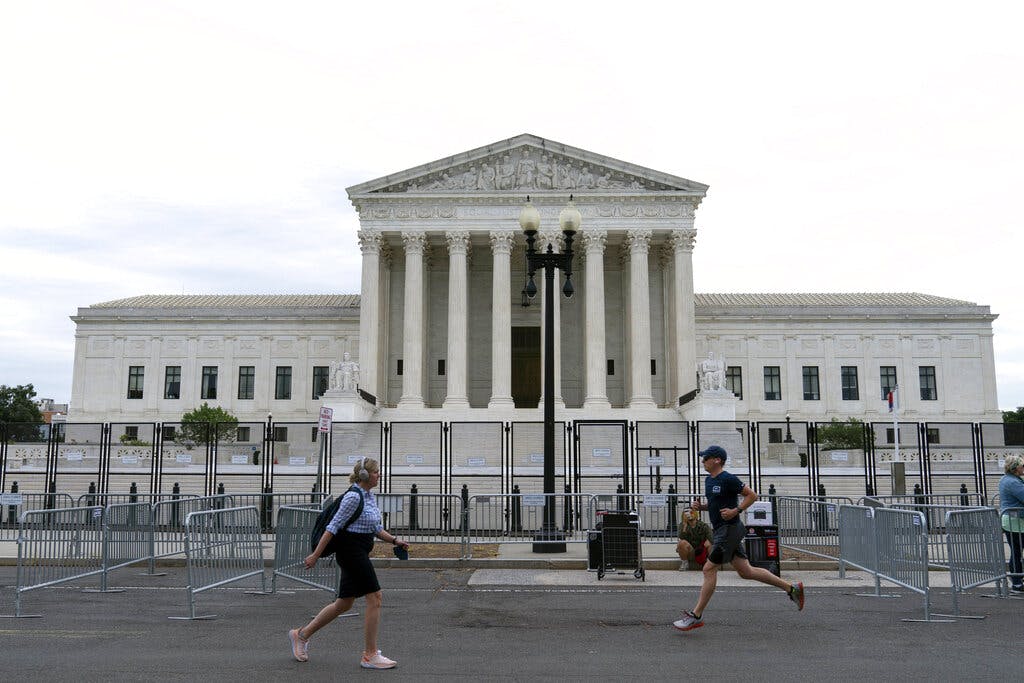High Court’s Ruling Ending Discrimination Against Religious Schools in Maine Could Have Broad Impact in U.S.
‘A State’s antiestablishment interest does not justify enactments that exclude some members of the community from an otherwise generally available public benefit because of their religious exercise.’

The decision of the Supreme Court to end discrimination against religious families in school voucher programs in Maine will reverberate across a United States where millions of families are trying to find the right education for their children at a time of crisis in many public schools.
In a six-to-three decision written by Chief Justice Roberts, the court ruled that a voucher program in Maine — where half of school districts lack high schools — violates the free exercise clause of the Bill of Rights. That’s because it blocked vouchers from being used in schools requiring religious instruction.
Maine’s Town Tuitioning Program, which supplies tuition assistance for rural students whose towns lack a high school, had been open to any accredited school of the rural families’ choice — provided the school is “a nonsectarian school in accordance with the First Amendment of the United States Constitution.”
Yet under that same First Amendment, the court ruled this morning, excluding religious schools was itself “discrimination against religion.” Maine’s “nonsectarian” requirement “for otherwise generally available tuition assistance payments,” the court said flatly, “violates the Free Exercise Clause.”
Two religious families from rural Maine brought the case, arguing that their free exercise rights had been violated. The free exercise clause is part of the First Amendment, which begins by saying that Congress shall make no law respecting an establishment of religion “or prohibiting the free exercise thereof.”
Maine argued that funding attendance at religious schools would put the state in jeopardy of violating the establishment clause. Yet the court concluded that “a State’s antiestablishment interest does not justify enactments that exclude some members of the community from an otherwise generally available public benefit because of their religious exercise.”
Quoting a previous opinion, the high court said such an exclusion “‘effectively penalizes the free exercise’ of religion.” The court’s ruling overturns decisions from lower courts, including the First Circuit. The justices seemed to heed a warning from the attorney for the families.
The attorney, Michael Bindas, feared that a “regulator in Augusta” would be looking into the “the curriculum and activities of the school” and sit “in judgment on whether that school is sufficiently irreligious.”
“Any attempt to give effect to such a distinction by scrutinizing whether and how a religious school pursues its educational mission would also raise serious concerns about state entanglement with religion and denominational favoritism,” Chief Justice Roberts wrote.
The majority opinion, however, noted that the state is under no obligation to fund religious education if public school options are sufficient, but religious schools must be eligible for a public program that allows vouchers to go toward private schools.
This was a more general application of the court’s ruling in a similar case regarding school vouchers, Espinoza v. Montana Department of Revenue. That decision left open the question of whether voucher funds could be used not only at a religious institution but for religious instruction itself.
The case in Maine, Carson v. Makin, made it clear that the Court is comfortable with voucher funds being used for religious instruction. The petitioners in this case were two families, the Carsons and the Nelsons, both of whom wanted to use the funding to send their children to Christian schools.
Maine’s chief deputy attorney general, Christopher Taub, argued that the state would only support “religiously neutral” education that was the “rough equivalent” of public school education as part of the voucher program. He claimed that the families wanted “to instill religious beliefs at taxpayer expense.”
Chief Justice Roberts argued that this distinction is itself a form of religious discrimination. That line of thinking was joined by Justices Samuel Alito, Brett Kavanaugh, and Amy Coney Barrett in oral arguments. Certain religious groups, Chief Justice Roberts noted, would not find it anathema to make these sessions optional, whereas other groups would. Justices Clarence Thomas and Neil Gorsuch also joined the majority.
Justice Alito gave a hypothetical example of a religious school with potentially “neutral” religious beliefs that might qualify for such a program. A school that values equality and human dignity but doesn’t “really have any dogma” would likely qualify for Maine’s voucher program, but is “pretty close to Unitarian Universalism,” he noted.
“[U]nless you can say that you would treat a Unitarian school the same as a Christian school or an Orthodox Jewish school or a Catholic school, then I think you’ve got a problem of discrimination among religious groups,” Justice Alito said during oral arguments.
The dissenting opinion, authored by Justice Stepen Breyer and joined by Justices Elena Kagan and Sonia Sotomayor, cautioned against what it sees as the prioritization of the free exercise clause over the establishment clause. “The Religion Clauses… created a compromise in the form of religious freedom,” Justice Breyer wrote.
The justice warned that overreliance on the free exercise clause has the potential to erode American social harmony. “[W]ith greater religious diversity comes greater risk of religiously based strife, conflict, and social division. The Religion Clauses were written in part to help avoid that disunion.”
The dissent seemed to rely on a more Jeffersonian interpretation of religion and state.
Justice Breyer quoted Thomas Jefferson in considering the potential for civil strife caused by taxpayer dollars going toward various forms of religious education: “to compel a man to furnish contributions of money for the propagation of opinions which he disbelieves, is sinful and tyrannical.”
“The Court continues to dismantle the wall of separation between church and state the Framers sought to build,” Justice Sotomayer wrote in a separate dissent, quoting Jefferson’s 1802 letter to the Danbury Baptist Association. The Constitution, though, makes no reference to any wall of separation.
A religious liberties scholar and law professor, Michael Helfand, says today’s decision has broad-reaching implications beyond schooling. He points to historic preservation grants for churches and synagogues.
“There are so many other government funding programs in which the government makes the public policy decision that there’s a set of private institutions that deserves funding for secular reasons,” Mr. Helfand says. “Constitutional law had not yet been clear, that where that money might coincidentally be used for religious purpose … whether or not states could exclude or local government could exclude religious institutions. You can’t do that anymore.”
The Orthodox Union, which had submitted an amicus briefing, applauded the decision in a press release today. The executive director of the organization’s TEACH Coalition, Maury Litwack, says the decision will allow the Orthodox Union to pursue funding for nonpublic schools in other states.
“This watershed Supreme Court ruling opens the door for our advocacy efforts at the state and local levels in key places like New York, New Jersey, Florida, Pennsylvania and elsewhere,” Mr. Litwack said in the statement.
In a statement from the United States Conference of Catholic Bishops, Cardinal Timothy Dolan and Bishop Thomas Daly praised the decision: “The Supreme Court has rightly ruled that the Constitution protects not just the right to be religious but also to act religious. This common-sense result reflects the essence of Catholic education.”
The Bishops’ statement also noted the irony of the decision coming from Maine, which James Blaine represented in the Senate. In 1875, Blaine attempted to introduce a constitutional amendment to deny aid to any “sectarian” school, rooted in 19th century anti-Catholic sentiments and fears about Catholic schooling. The amendment failed, but 37 states instituted similar laws — which could be challenged by today’s ruling.
Before 1981, rural Maine families had been allowed to use the tuition vouchers for religious schools. The legislature amended the law as concerns about “antiestablishment interests” became more prominent in the second half of the 20th century, a trend the Sun’s editorial board noted in an editorial about a football coach blocked from praying on the gridiron.
Carson v. Makin seems destined to establish the Roberts Court as a major chapter in the struggle for religious freedom — a prospect first signaled in a case known as the Equal Opportunity Employment Commission v. Hosanna Tabor. In that case, the court prohibited the federal government using civil rights law to regulate the hiring of ministers.
One of the religious freedom cases of the Roberts Court was Town of Greece v. Galloway, in which the court permitted the New York state village to open its town meetings with a voluntary prayer. Another was Trinity Lutheran Church of Columbia Inc. v. Comer, in which the court held that the state could not refuse to pave the school’s playground, as it did for other schools, because of the school’s religious status.

